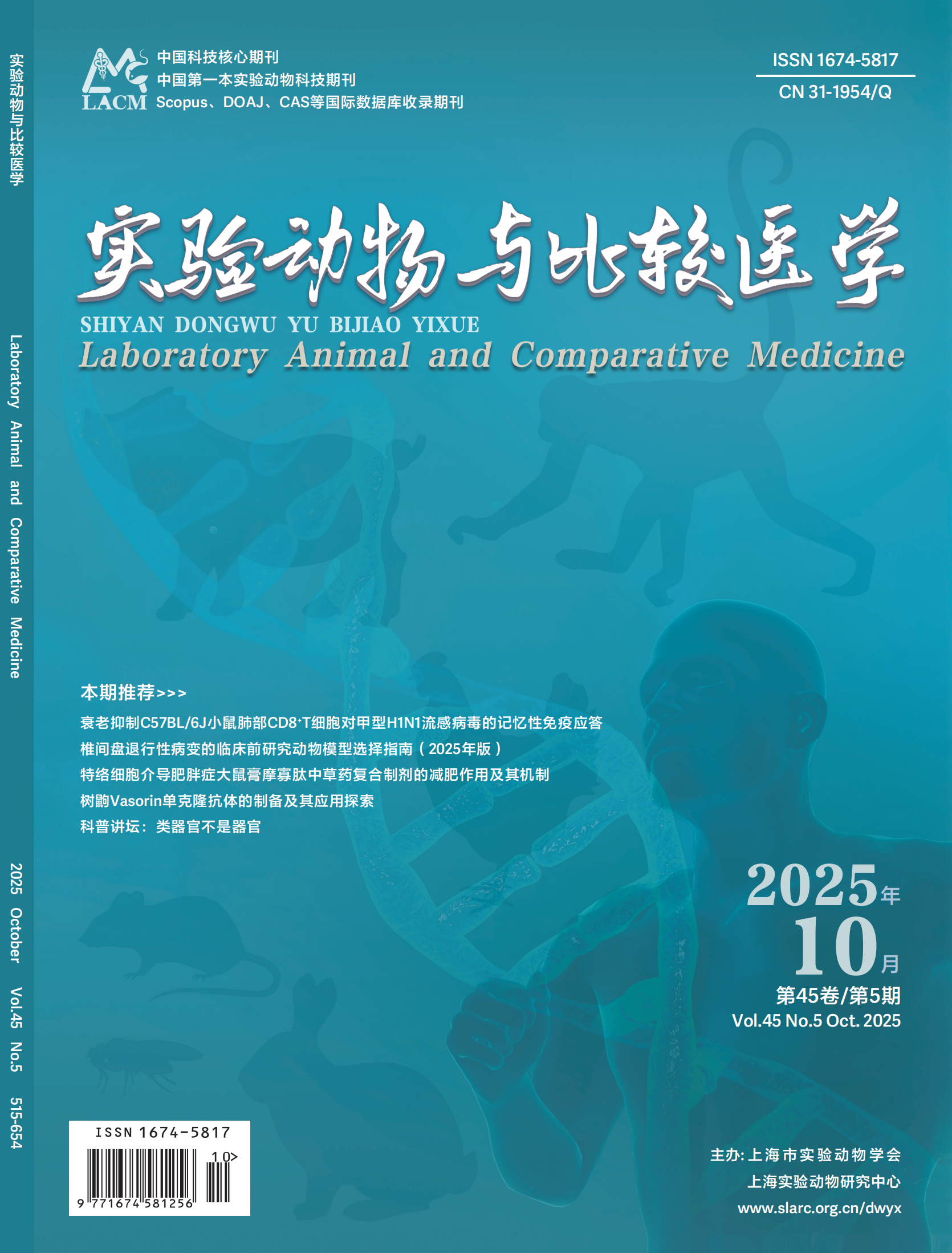Objective To establish a weightlessness simulation animal model using miniature pigs, leveraging the characteristic of multiple systems’ tissue structures and functions similar to those of humans, and to observe pathophysiological changes, providing a new method for aerospace research. Methods Nine standard-grade miniature pigs were selected and randomly divided into an experimental group (n=7) and a control group (n=2). The experimental group was fixed using customized metal cages, with canvas slings suspending their hind limbs off the ground, and the body positioned at a -20° angle relative to the ground to simulate unloading for 30 days (24 hours a day). Data on body weight, blood volume, and blood biochemistry indicators were collected at different time points for statistical analysis of basic physiological changes. After the experiment, the miniature pigs were euthanized and tissue samples were collected for histopathological observation of the cardiovascular, skeletal and muscle systems HE and Masson staining. Statistical analysis was also conducted on the thickness of arterial vessels and the diameter of skeletal muscle fibers. Additionally, western blotting was employed to detect the expression levels of skeletal muscle atrophy-related proteins, including muscle-specific RING finger protein 1 (MuRf-1) and muscle atrophy F-box (MAFbx, as known as Atrogin-1), while immunohistochemistry was used to detect the expression of glial fibrillary acidic protein (GFAP), an indicator of astrocyte activation in the brain, reflecting the pathophysiological functional changes across systems. Results After hindlimb unloading, the experimental group showed significant decreases in body weight (P<0.001) and blood volume (P<0.01). During the experiment, hemoglobin, hematocrit, and red blood cell count levels significantly decreased (P<0.05) but gradually recovered. The expression levels of alanine aminotransferase and γ-glutamyltransferase initially decreased (P<0.05) before rebounding, while albumin significantly decreased (P<0.001) and globulin significantly increased (P<0.01). Creatinine significantly decreased (P<0.05). The average diameter of gastrocnemius muscle fibers in the experimental group significantly shortened (P<0.05), with a leftward shift in the distribution of muscle fiber diameters and an increase in small-diameter muscle fibers. Simultaneously, Atrogin-1 expression in the gastrocnemius and paravertebral muscles significantly increased (P<0.05). These changes are generally consistent with the effects of weightlessness on humans and animals in space. Furthermore, degenerative changes were observed in some neurons of the cortical parietal lobe, frontal lobe, and hippocampal regions of the experimental group, with a slight reduction in the number of Purkinje cells in the cerebellar region, and a significant enhancement of GFAP-positive signals in the hippocampal area (P<0.05). Conclusion Miniature pigs subjected to a -20° angle hind limb unloading for 30 days maybe serve as a new animal model for simulating weightlessness, applicable to related aerospace research.

